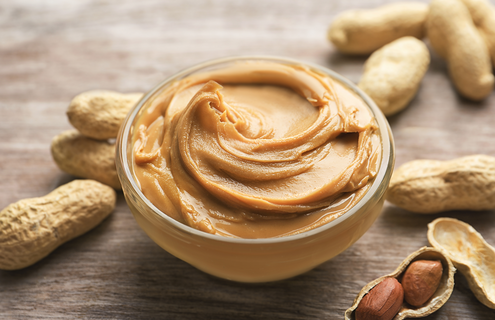
Magnesium is an essential mineral for our bodies, but many people are not getting enough.
That’s because magnesium is in foods that are often limited in people’s diets, says Dartmouth Health Manager of Clinical Nutrition Services, Kelli Boi, MS, RDN-AP, LD, CNSC, an advanced practice registered dietitian nutritionist.
So how much magnesium is enough and which foods are best?
Do some research
“You can't eat too much magnesium in food,” says Boi.
That's in contrast to magnesium supplements, which can lead to symptoms of toxicity, like gastric stress.
However, because food manufacturers are not required to include magnesium on the nutrition facts label, you may have to educate yourself.
Why Magnesium matters
It's important to take a look at your diet because there is a good chance that you may not be consuming as much magnesium as you should.
The latest data from 10 years ago suggests that 48% of people are consuming less than their recommended daily allowance. A more recent study shows that the vast majority of people are at risk of becoming deficient in the mineral.
But magnesium is important.
“The National Institute of Health (NIH) says magnesium is involved in more than 300 reactions in our body,” says Boi.
These reactions are involved in protein synthesis, muscle and nerve function, bone structure, blood glucose control, and blood pressure regulation.
All of these are vital for good health.
For example, blood regulation can be helped by the DASH (Dietary Approaches to Stop Hypertension) diet in part because of the magnesium it contains, says Boi.
What foods are best
Among those foods with the highest magnesium content are roasted pumpkin and squash seed kernels, almonds, and trail mix with chocolate chips.
Foods containing fiber usually have magnesium, too.
"Little baby plants—if you can plant it and expect it to grow—like beans, nuts, seeds, and legumes are good sources of magnesium,” Boi says. “Peanut butter is also going to get you a lot of magnesium.”
Leafy vegetables, meanwhile, include those with smaller leaves, like spinach.
Bear in mind, too, that some foods with higher concentrations of magnesium are not always the healthiest for you, especially in large quantities.
“Dark chocolate has magnesium,” says Boi. “But to get your needs met with magnesium, you’d have to eat more dark chocolate than you should be eating in a day.”
Abridged list ordered by nutrient content in household measure
Source: USDA National Nutrient Database forStandard Reference Legacy (2018)
Nutrients: Magnesium, Mg(mg)
| Description | Measure | Magnesium, Mg(mg) per measure |
|---|---|---|
| Seeds, pumpkin and squash seed kernels, roasted, with | 1.0 cups | 649 |
| Nuts, almonds, dry roasted, without salt added | 1.0 cups whole kernels | 385 |
| Beans, pink, mature seeds, raw | 1.0 cups | 382 |
| Beans, black, mature seeds, raw | 1.0 cups | 332 |
| Nuts, butternuts, dried | 1.0 cups | 284 |
| Peanuts, all types, dry-roasted, without salt | 1.0 cups | 260 |
| Whey, sweet, dried | 1.0 cups | 255 |
| Beans, adzuki, mature seeds, raw | 1.0 cups | 250 |
| Snacks, trail mix, regular, with chocolate chips, unsalted nuts and seeds | 1.0 cups | 235 |
| Peanuts, valencia, oil-roasted, without salt | 1.0 cups | 230 |
So how much is enough?
The recommended intake of magnesium varies by age and gender, but in general, adults are meant to get somewhere between 300mg and 400mg a day. In concentrate, 300mg is about a sixth of a teaspoon.
That may not sound like a lot, but for your daily dose as an adult, that would mean eating about three ounces of roasted pumpkin seeds—or about the amount in a bag of seeds at many retailers.
So to get what you need through diet, consider varying your food source, says Boi.
“In general, try to think about getting more foods with nuts and seeds and beans. There are others, but that’s a good place to start.”
The USDA provides this list of foods with magnesium by nutrient content from the USDA.
Related Article
For more information on magnesium, read: Are Magnesium Supplements Good for You?